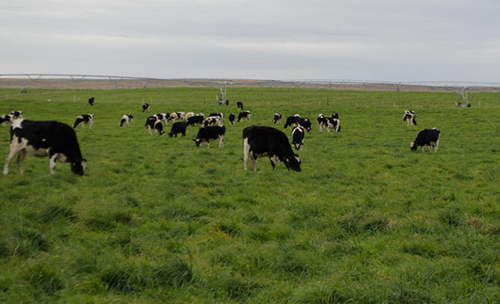
Age? Weight? Height? If you ask three dairy producers what criteria they use to breed heifers, each will likely give you a different answer. One thing we can all agree on: pushing the age at first calving out too far comes with a hefty price tag.
In addition to being the most fertile group of animals, heifers should represent the best genetics on the farm. Breeding heifers at the right time enables producers to take full advantage of this valuable resource, noted Emily Wilmes, an extension educator with the University of Minnesota.
Data from 13,000-plus dairies enrolled in DHI testing indicated that the average age at first calving ranged from 25 to 27. 3 months. In that data set, the minimum age at first calving was 20 months while the maximum age was 30 months.
These heifers were followed through their first lactation. Those that calved at 24 months or younger had higher milk production and components. Evidence from previous studies indicated that older heifers might produce more milk in their first lactation, but when lifetime yields were calculated, heifers calving at younger ages won out.
Wilmes then highlighted work by Paul Fricke, with the University of Wisconsin-Madison, that compared heifers calving at 20, 24 and 32 months.
A heifer calving at 20 months would hit puberty at 9 months and conceive around 11 months of age. This heifer's nonlactating time is much shorter, which saves money on the front end. But, in the long run, mammary development is impaired, which results in lower milk production and profits. "Heifers that calve at 19 to 21 months also have a greater risk of dystocia and metabolic disorders," added Wilmes.
To calve between 23 and 24 months, a heifer must conceive at approximately 14 months. While this heifer spends more time in a non-lactating stage compared to the animal calving at 20 months, it is at an optimum age to have a good first lactation and strong subsequent lactations. Calving at this age also benefits future reproductive performance.
Fricke's work then noted that a heifer bred at 23 months of age will calve at 32 months and spend over two and a half years as a non-lactating animal. Each day calving is delayed beyond 24 months costs $1.50 to $3 per heifer. While few producers will wait until 32 months to calve animals in, waiting until just 27 months could cost a dairy $135 to $270 per heifer. Multiplied across the entire heifer population, this delay can add up quickly.
Breeding is driven by puberty, which is related to a heifer's size and development. Therefore, puberty may be delayed or accelerated based on how heifers are fed and cared for.

The author is an associate editor and an animal science graduate of Cornell University. Smith covers feeding, milk quality and heads up the World Dairy Expo Supplement. She grew up on a Medina, N.Y., dairy, and interned at a 1,700-cow western New York dairy, a large New York calf and heifer farm, and studied in New Zealand for one semester.





